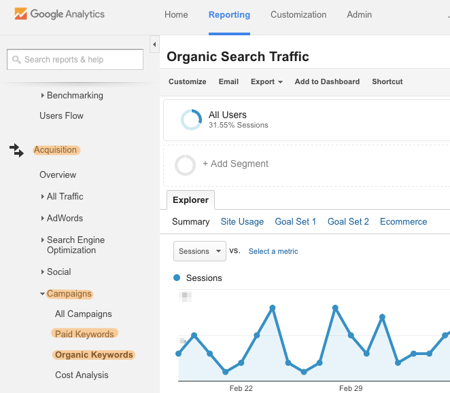How familiar is the general public with your company, its product line, its values, its reputation and its unique value proposition?
While strong brand awareness is important for any business that aims to last in the market for the long term, it also boosts revenues on a micro level, effectively helping you to shorten sales cycles, boost market share and increase customer retention. People simply like doing business with companies that they’re familiar with.
Moreover, it’s this sense of familiarity that marketers seek to build in individuals over time, as audience members come into contact with your brand in different contexts until eventually reaching the tipping point of sales-readiness.
FREE GROWTH TOOL
Assess Your Growth Performance & Set Clear Goals.
Measure your growth performance and quickly identify the cause of friction in your buyer journey.
Thanks for submitting the form!
What Is Brand Awareness?
Most people define brand awareness as the amount of the target market that knows about your brand and your offer.
I suppose that's an adequate definition, but if it's your mindset, then brand awareness is a vanity metric.
How?
Imagine if 100% of your target audience knew about your brand and your product. Now, imagine if 100% of your audience wasn't interested (and never bought) your product.
How important was brand awareness in that scenario?
What kind of ROI would you put on it?
The truth is, too many companies think about brand awareness in this way. They put more thought and effort into being noticed than they ever put into their offer and message. To them, brand awareness holds no value because it's a vanity metric.
How do you turn brand awareness into a tangible asset?
Make sure you get out of the rut of "me too" marketing.
How? Watch these videos.
Why Measure Brand Awareness?
Given the significance of brand awareness as a factor pointing to business health, it should come as no surprise that thought leaders have developed a whole slew of performance metrics to measure brand awareness.
Tracking these KPIs can provide the savvy inbound marketer with a useful gage of the extent to which publicity efforts are effective. When brand awareness flourishes, so should website visitors, social media engagement, sales, revenues and market share. When brand awareness declines, it’s time to revisit your marketing strategy.
Brand awareness measurement tools, which are generally relatively expensive, are particularly valuable when used to track impact over time. The metrics for any given specific day will provide nothing more than a snapshot, unable to provide a sufficiently clear understanding of how familiar people are with your name.
The free version of Google Analytics, on the other hand, is probably useful enough for most marketers’ brand awareness tracking needs. While it won’t pick up on brand name conversations taking place on social media, nor press mentions of your brand, Google Analytics does allow you to track some brand awareness KPIs, as we’ll see below.
Quick Tips for Building Brand Awareness
Here are three things you can do today with your inbound marketing to increase awareness of your brand.
- To be as memorable as possible, your brand should be different from the rest, and it should be emotionally charged. Your company’s name, logo, tagline, content, visual appearance online, voice and all marketing materials should present the flavorful image you want your potential clients and customers to associate with you.
- Spread your brand online by branding your content assets. As long as your logo appears alongside a means of reaching you, you are doing well when you send it out into seas of likes and shares. Moreover, the more downloadable content you develop, the more likely it is that people will see your material, so make sure they can easily see who’s behind it.
- Forge partnerships for brand amplification. Niche influencers are often open to becoming “brand ambassadors,” tapped to mention your materials and products – and linking back to your site. You can also reach out to companies to pool resources and publicize one another’s brands. Partner with those whose work complements your own without directly competing, so that you can both benefit by co-creating, co-branding, and co-promoting.
Measuring Brand Awareness in Google Analytics
Once you feel like you’re doing all you can to spread your brand to the world, you want to make sure that your efforts are paying off. While there are many measurable indications that people are familiar with your brand, the simplest KPIs have to do with how visitors to your site find you via search engines.
Google Analytics helps you with this by breaking down site traffic according to the source. If you chart these results, especially over time, you’ll get a sense of the percentage of visitors to your website who made their way to your pages already knowing your brand name.
It’s all rendered a bit more complicated by the “not provided” phenomenon. A few years ago, in order to maximize user privacy, Google stopped providing a complete view of the organic search queries that referred users to your website. However, for a broad sense of your brand awareness, you don’t need that level of precision – especially if you have enough volume of incoming traffic from search.
Branded Search Referral Volume
To gain a sense of how aware the general public is of your brand name, start by looking in Analytics at the keywords people used when Google sent them your way. Keep an eye on the proportion of this traffic that is driven by your pay-per-click campaigns vs. organic search results. In Analytics, head to Acquisition, then Campaigns and then Organic Keywords. Here you’ll see the volume of visits as well as the percentage that these visits represents compared to all of your traffic. For sponsored referrals, head to Paid Keywords.

On either screen, you can use the search box to refine results and display only keywords that include your brand name. With these reports, assuming your Goals are set up, you can also see the conversion performance and onsite engagement levels of each type of branded search.
Retracing Their Digital Steps
Your reputation is no less important to your success today than it was in the era of mom-and-pop, brick-and-mortar business. When it comes to growth opportunities, however, hey key difference is that now there is far more you can do to propel your business to the top of your industry, through top-notch product, service, branding and inbound marketing.
With all of these disciplines, there’s quite a bit that the shrewd business leader can do to make ongoing improvements. The trends are always changing, there are always new perspectives to consider, and new tools of the trade are being rolled out every day.
Even within the niche of tools for tracking and analyzing search engine positioning and clickthroughs, there’s a vibrant ecosystem of free and premium software. To gain insight at a glance into your company’s current mastery of brand awareness, there’s arguably no better destination than the trusted, free hub of metrics that is Google Analytics.

